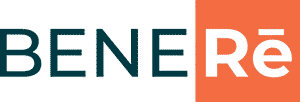The insurance industry is not traditionally known for being transparent, but changes are underway. Certain areas of employee benefits suffer from a lack of transparency regarding claims and compensation. Here’s what you need to know about forthcoming transparency rules.
Key takeaways:
- Employers are often kept in the dark as to the financial performance of the voluntary (supplemental) benefits programs they offer to employees. This creates suspicion around the voluntary benefits value proposition.
- The Consolidated Appropriation Act of 2021 (CAA) calls for transparent insurance benefit disclosures.
- Form 5500, which is part of the ERISA reporting and disclosure framework, will become less convoluted as a requirement of the Act.
Employers have been expressing their concerns about the lack of transparency in supplemental and voluntary benefit offerings for decades. Employers with a fiduciary mindset want to maximize financial protection for their employees, but the widespread concealment of information regarding claims and expenses has always made that difficult. In some cases, it has even raised suspicions regarding the value proposition offered by these policies.
The good news is that changes are on the way. The Consolidated Appropriation Act of 2021 (CAA) aims to address the issue of transparency in benefit disclosures and other steps are being taken to improve sponsoring employers’ visibility into the insurance packages they offer.
Here’s what you need to know about the forthcoming benefits disclosure rules and why they matter.
How the Voluntary Benefits Market Operates
Step one in understanding disclosure reform is understanding how the voluntary benefits market operates:
- Accident, Critical Illness and Hospital Indemnity policies are predominantly offered to employees on a payroll deducted basis, meaning the employees pay for their own coverage.
- Commissions, Fees and Contingencies are rarely fully disclosed to employers.
- These high compensation costs contribute to low claims ratios.
- Low claims ratios eventually lead to higher than average profit margins for insurance carriers.
- High compensation percentages, low claims ratios and above average insurance company profits for these policies lead to concealment of financial performance disclosure because of the poor optics of the value proposition.
Employers who understand the subtle nuances of this part of the benefits market can drive a much better value proposition for their employees. But well-informed decisions about choosing the right voluntary benefits offering for employees depends on absolute transparency.
The Consolidated Appropriation Act of 2021
Promulgated on December 27, 2020, with a total of 5,593 pages, the Consolidated Appropriation Act of 2021 was the longest bill ever passed by U.S. Congress. Its main aim was to roll out COVID-19 pandemic-related insurance industry relief, but it also brought many employee benefit plan provisions in:
- Group health plans
- Fringe benefits
- Retirement plans
Many of the group health plans changes ask for contract reviews and updates with third-party vendors, and most will go into effect in 2022. Two of the most important are the:
- Transparency disclosure provision
The Consolidated Appropriation Act of 2021 contains disclosure requirements aimed at increasing transparency in group health plans. It makes it mandatory that insurance brokers provide an advance explanation of benefits (EOB) informing participants about the providers and expected costs, for example. Unfortunately voluntary benefits are not explicitly included in the requirements.
- Removal of gag clauses
The Act bars health network contracts that prevent participants from accessing information about cost and quality of care. It also asks for access to specific claims data, such as the financial information in the provider contract.
How the Act impacts the insurance industry
Much as disclosure rules drove change in the retirement planning industry, the Consolidated Appropriation Act of 2021 will help create transparency in the benefits space. Here are some of the facts and some changes that are coming:
- The Act aims to remove ambiguities regarding the fees and commissions that consultants or brokers extract from the plan sponsors or the insured individuals.
- Consultants and brokers working for different insurance companies will have to be upfront about the total premiums being charged.
- Complete financial information about voluntary benefits programs was not previously addressed, but will likely be in the future.
The Consolidated Appropriation Act requires that financial data be available and reported, meaning plan sponsors will eventually be able to make better-informed decisions about their voluntary benefit offerings. Much of this begins with a changed approach to Form 5500.
About Form 5500
Form 5500 is a reporting and disclosure framework instrument of the Employee Retirement Income Security Act (ERISA). Its purpose is to ensure employee benefit plans are managed and operated according to prescribed standards. The form makes certain that benefit plan participants and regulators have access to the information necessary to safeguard the participants covered under the plan.
As previously mentioned, financial information relating to voluntary benefits is not appropriately disclosed but unfortunately the Consolidated Appropriation Act of 2021 does not demand transparency for these lines of coverage. This results in voluntary benefits providing outlier profit margins to brokers and carriers alike.
The amended regulations mandate that employers file a form 5500 schedule with all the relevant information. Insurance companies will have to provide complete information about the premiums and commissions on the form. This process is still evolving and needs to be closely watched for how it will apply to voluntary benefits.
Work with the experts
If you’ve been wondering about the strength and performance of your employees’ supplemental (voluntary) benefits package, BeneRe can help. Our team is disrupting the voluntary benefits status quo with group captive insurance solutions. We believe in transparency and providing the best possible value to your employees. That’s why our group captive pooling program partners with best-in-class insurance companies and brokers who are better aligned with the interests of your employees. This drives enhanced coverage, lower cost, total transparency and increased employee benefits program resources.
For more information about BeneRe’s insurance offerings, contact us today.
